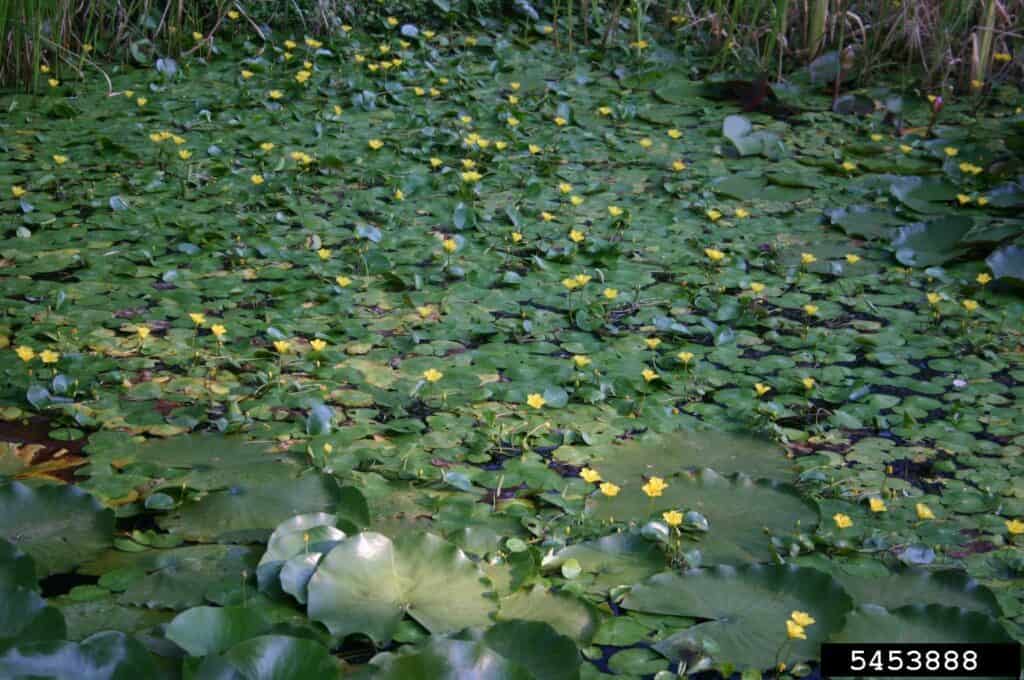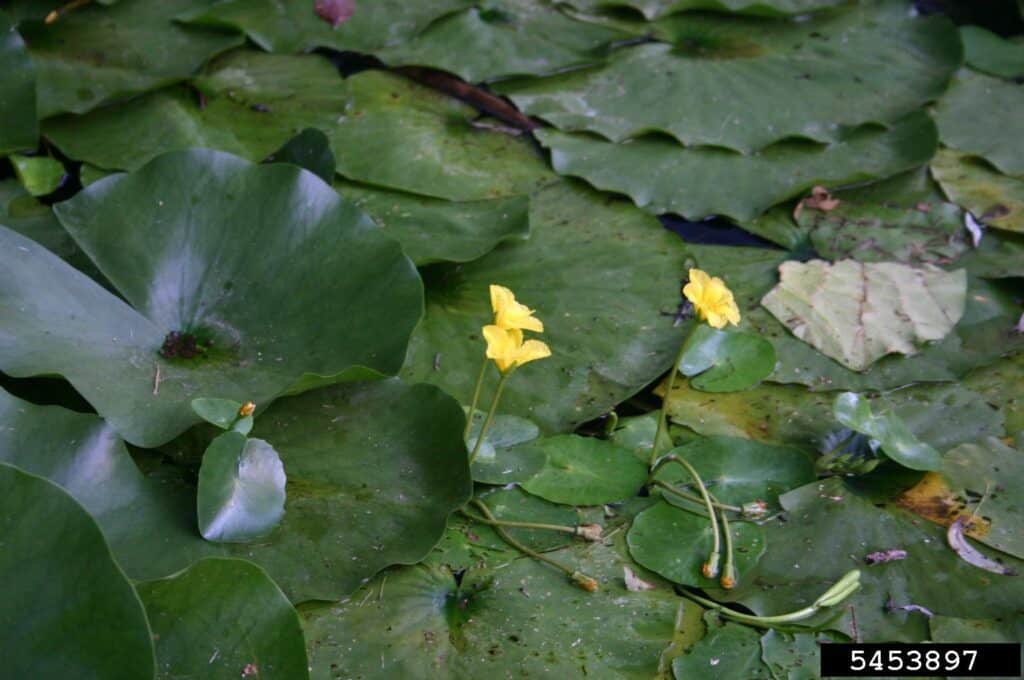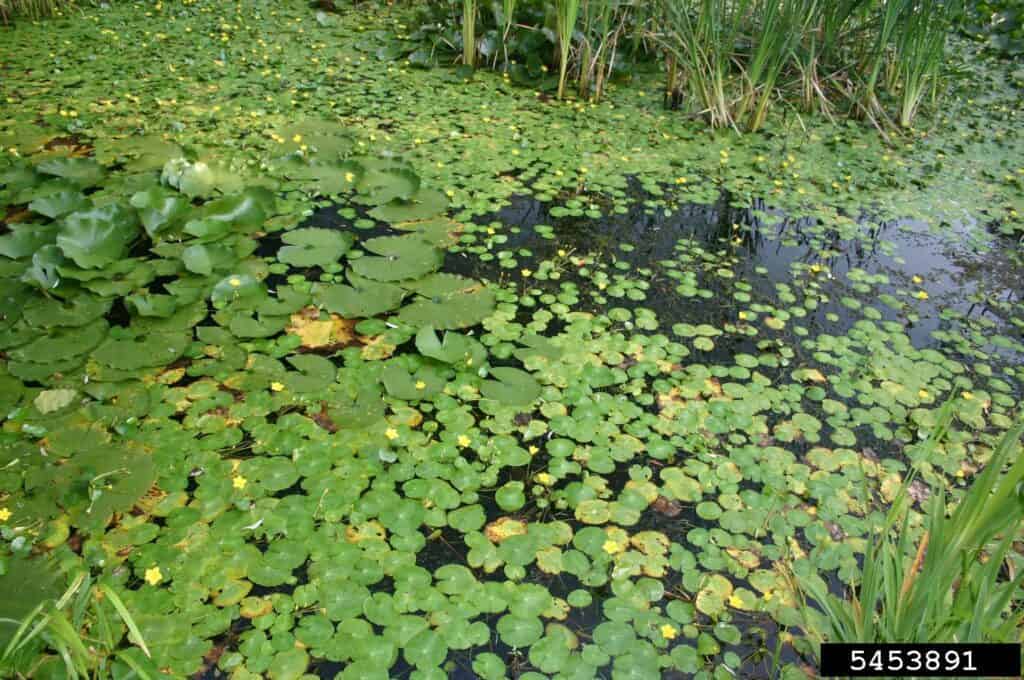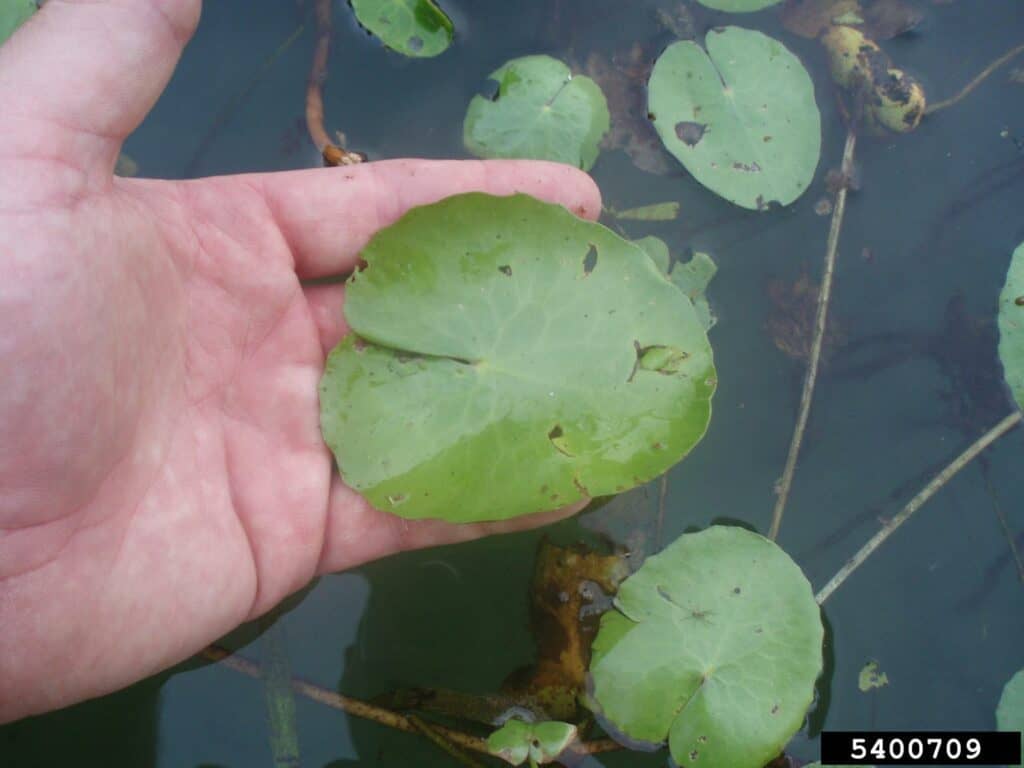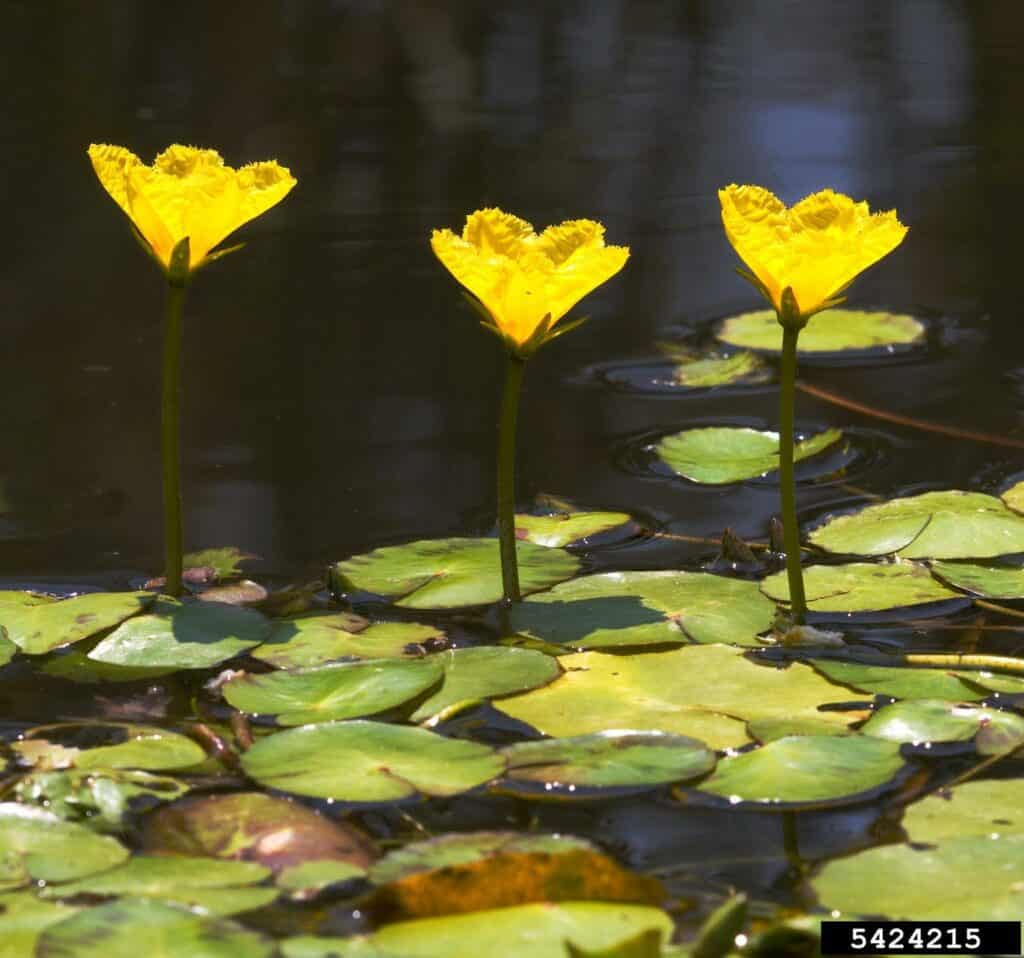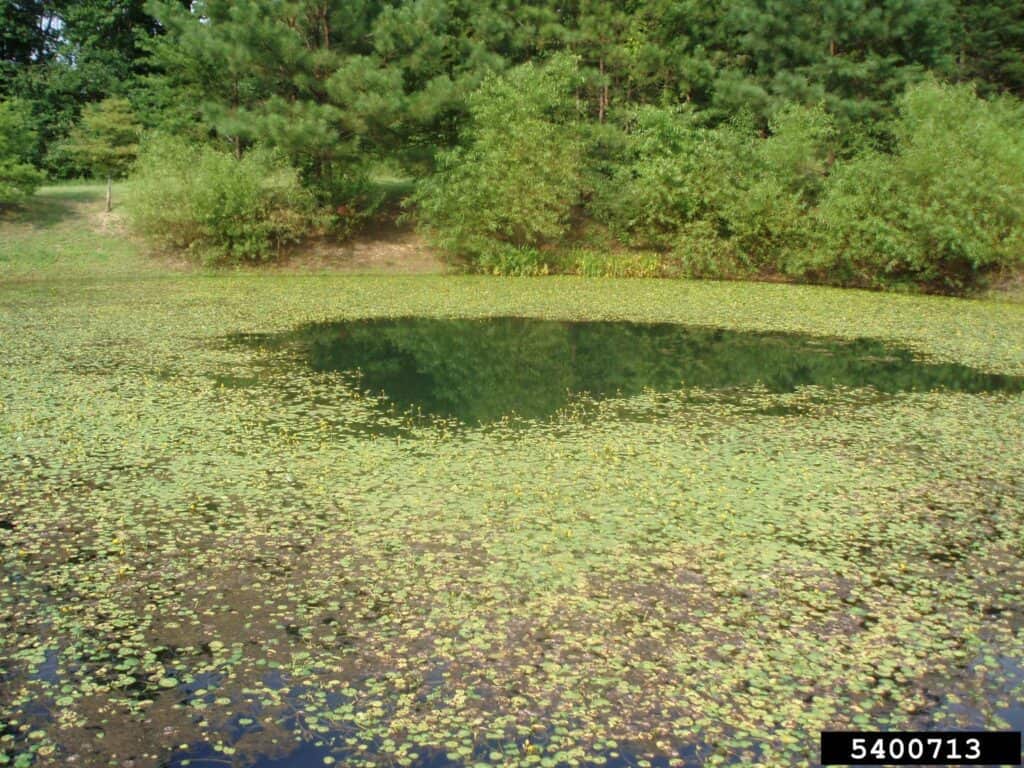*Prohibited in Michigan
Report this species to:
EGLE Aquatic Invasive Species Program EGLE-WRD-AIP@Michigan.gov.
If possible, please take one or more photos of the invasive species you are reporting. Also make note of the location, date and time of the observation. This will aid in verification of your report. You may be asked to provide your name and contact information if follow-up is needed.
– Or – use the Midwest Invasive Species Information Network (MISIN) online reporting tool
– Or – download the MISIN smartphone app and report from your phone – MISIN.MSU.edu/tools/apps/#home
Identification:
- Flowers are bright yellow with 5 petals, located above the surface of the water.
- Leaves are circular or heart shaped.
- Leaves are alternately arranged on the stem but oppositely on the flower stalk.
- Seeds are flat and oval; many seeds per capsule.
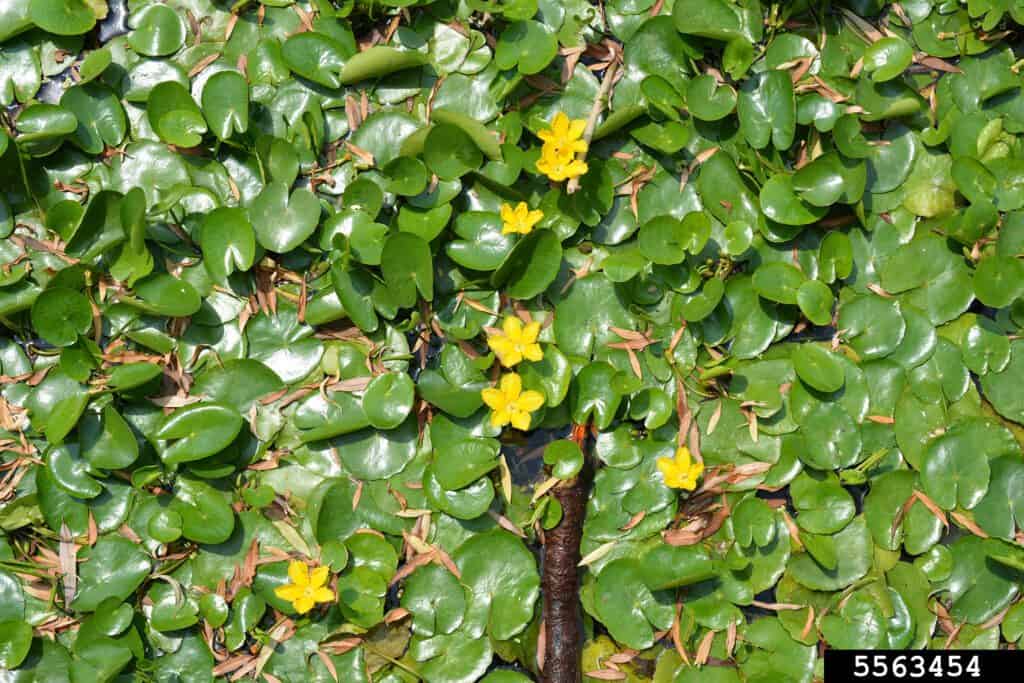
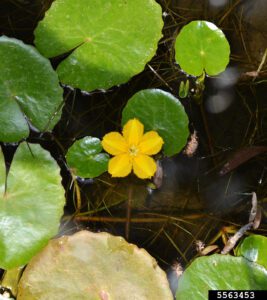
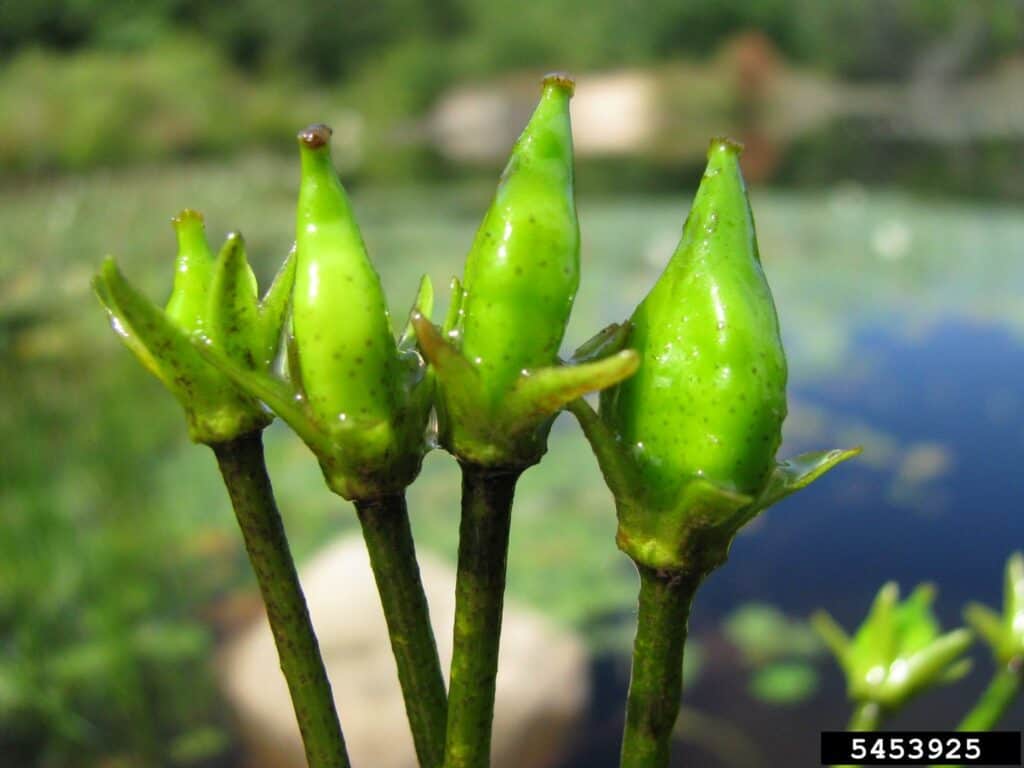
Habitat: This perennial aquatic plant is most commonly found in slow moving rivers, ponds and lakes.
Native Range: Asia and Europe.
U.S. Distribution: Introduced to many U.S. states.
Local Concern: Yellow floating heart can create dense mats that shade out native aquatic plants, decrease oxygen levels, increase mosquito breeding habitat and impede boating activity, fishing and swimming. Fragmented pieces of plants can establish new populations and seeds are engineered to disperse by attaching to the feathers of waterfowl.
Look-alikes: Common Michigan plants that can be mistaken for yellow floating heart include yellow pond lily and white water lily. The leaves of both these native lilies have smooth edges, while yellow floating heart’s leaves are scalloped. Yellow pond lily has a cup-shaped flower with smooth-edged petals. Yellow floating heart’s flower has five fringed petals (see above). White water lily’s flower has many rows of white petals and a yellow center.
MORE INFORMATION:
Weed Risk Assessment for Yellow Floating Heart (Nymphoides peltata) – This document evaluates the invasive potential of the plant species using information based on establishment, spread and potential to cause harm.
Credit:
Yellow Floating Heart. (n.d.). Retrieved March 15, 2023, from https://www.michigan.gov/invasives/id-report/plants/aquatic/yellow-floating-heart
